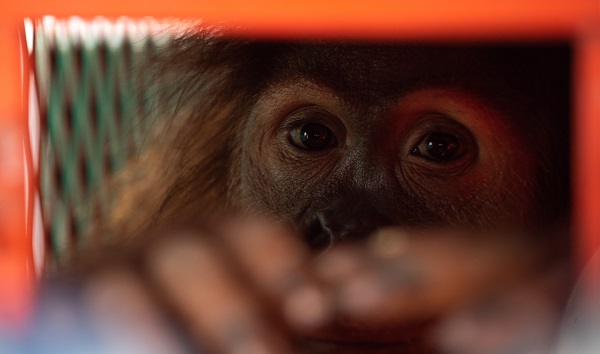(NEW YORK) — Scientists have discovered what may have prompted early human ancestors to begin developing speech and language.
As the landscape in which ancient hominids lived transformed from dense forests to open plains during the Miocene era, between 5.3 million and 16 million years ago, the transformation may have prompted the hominids to develop language, switching from vowel-based calls to consonant-based calls, according to a study published in the journal Nature on Thursday.
Hominids — a family of primates from which homo sapiens evolved — lived in treetops prior to a change in climate in the Middle and Late Miocene era that led to wide-open grasslands replacing forests in Africa, and hominids transitioning from living primarily in trees to moving onto the ground.
Researchers at the University of Warwick in Coventry, England, studied two types of orangutan calls by playing them in the savanna in South Africa, which is similar to the landscape in which the hominids would have lived as language developed. That’s according to Charlotte Gannon, a PhD candidate at the University of Warwick’s department of psychology and one of the lead authors of the paper.
The first call, labeled a “kiss squeak,” is known as a “proto-consonant” because orangutans make the sound by closing their mouth or using their lips, jaw and tongue, Gannon told ABC News. However, the second call, a “grumph,” known as a “proto-vowel,” can be made without any manipulations.
“We call them open, but they’re voiceless,” Gannon said of the sounds, adding that orangutans were chosen for the study because they’re the only arboreal great apes, meaning they still live in trees.
Scientists have been using the calls as a “bit of a time machine” to understand what speech was in certain periods of time, Gannon said. By playing the sounds in an open landscape, they found that the consonants traveled much farther than the vowels did.
Researchers believe the development occurred so hominids could communicate in open spaces, when the physical distance between them was greater than when they were living in trees, according to the paper.
The findings were significant because most modern languages have a heavy consonant-to-vowel ratio, Gannon said.
“It tells us a little bit more about how we may have actually relied on consonants a bit more in order to pass our messages across, pass information across, especially once we’ve moved to these further landscapes,” she said. “We were trying to communicate with each other in greater distances.”
Gannon and her colleagues were a bit surprised by the findings because consonants are formed at higher frequencies, and the science of sound propagation would typically mean that lower frequencies travel farther, she said. But in the case of grumphs and kiss-squeaks, the latter traveled farther.
The vowel-based calls were significantly less audible compared to consonant-based calls after distances of 125 meters, or about 410 feet, whereas consonant-based calls exhibited a modest decrease in audibility after 250 meters, or about 820 feet, according to the study.
Additionally, fewer than 20% of vowel-based calls were audible at 400 meters, compared to approximately 80% of consonant-based calls, the researchers found.
Modern language still had millions of years after the Miocene era to get to its current form, Gannon said, but noted that this early expansion of speech was a “pivotal” turning point in language development for humans.
Out of all the hominid species, homo sapiens is the only one to emerge with a “rich” spoken language, Gannon said.
“I think the ecological landscape that we experienced at the time had a really profound impact on this emerging language that we ended up with,” she said.
Copyright © 2023, ABC Audio. All rights reserved.












